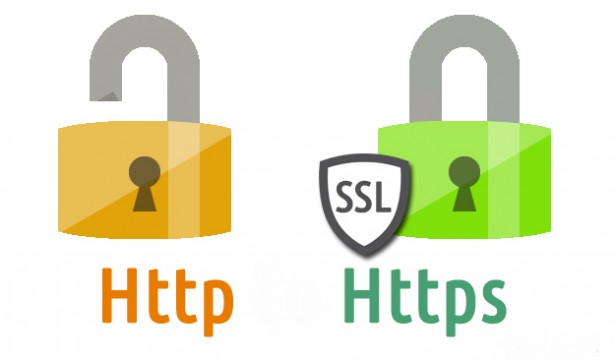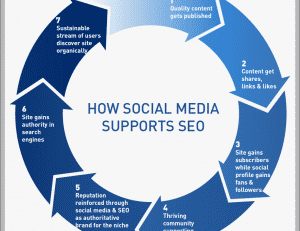HTTPS: Why You Need To Make The Switch
You may have heard a lot of information about switching to HTTPS recently; it’s been the buzz of web design news for a while now! You might be wondering though, exactly what HTTPS is and why it’s necessary for the day-to-day running of your website. We’ve written this article to help you to understand why it’s important and why you need to make the switch.
If your website handles any user data or sensitive information, it’s vital that you’ve made the switch to HTTPS. However, there’s a number of reasons why even a site that handles no data whatsoever ought to make the switch. In short, these reasons are:
- Google prefers sites that are using HTTPS; this means that you can improve your SEO by making the switch. Improving your SEO means more traffic to your website!
- Intruders often enter through ‘man-in-the-middle’ exploits between your website and its users. This is called 3rd party intrusion.
- Intruders will look at aggregate behaviours to identify people using your site. HTTPS will protect your users’ privacy.
- Web browsers’ “not secure” warnings for HTTP websites make it unlikely for users to be willing to enter credit card information or login data. This means they’re likely to look to your competitors.
- HTTPS also makes your site applicable for more cutting-edge features that are not for use on HTTP sites.
 HTTPS Protects Your Site from 3rd Party Intrusion
HTTPS Protects Your Site from 3rd Party Intrusion
First and foremostly, HTTPS protects your website’s users from intrusions from third parties. These third parties can include malicious attackers trying to access private information, but also benign companies that place intrusive advertisements on unsecured pages.
Intruders can also trick your users into giving up sensitive information or installing malware onto their PCs. This is bad for your users but also bad for your business. It damages the legitimacy of your website and your business to have these intrusive adverts and malware on your site.
Intruders will make use of any exploit that is offered to them and will attempt to access every unsecured communication between your site and its users. Intrusions can happen at any point in the network i.e. the user’s machine, Wi-Fi hotspots, compromised ISPs. They can also enter through a number of unsecured exploits in HTML, images, scripts and cookies.
HTTPS Ensures the Privacy of Your Users
HTTPS stops intruders from being able to tap into the communications taking place between your site and your users. HTTPS isn’t just for sites that handle large quantities of sensitive user data; they’re for every site. Unprotected HTTP requests can reveal information about the ways in which your users use your site and their behaviours. This can lead to intruders finding out about the identities of your users.
With GDPR regulations just around the corner, the need for adequate protection for your user data is more important than ever. Take a look at our article about GDPR to make sure that your site is adhering to the regulations.
Find out more about user-friendly web design!
Improve SEO by making the switch to HTTPS
You’re probably aware that Google’s algorithm is constantly changing, and as such the ‘rules’ for which sites get the top rankings are always changing too. Of two sites that both rank equally in every other way, the one that has HTTPS enabled will always win over the one with HTTP. As such, making the switch to secure browsing ensures that you’re always getting the best SEO results possible.
Google is always evolving and trying to improve its user experience. As such, HTTPS, which is innately better for users, wins out when it comes to trying to play Google’s algorithm. Better SEO results mean more traffic to your site, and as such, HTTPS can make a big difference in terms of website traffic.
HTTPS and AMP
It’s 2018 and mobile browsing is increasingly edging out browsing on a PC. AMP stands for ‘accelerated mobile pages’, i.e. sites that load almost instantaneously on a mobile device. The lightning bolt next to certain results on Google means that a site is AMP-ready.
AMP is becoming increasingly important for SEO, and Google has been making it a priority for the past year.
AMP is great for user-friendliness and the overall user experience of a site. However, a site can’t be considered for AMP unless it meets certain criteria; one of these being HTTPS. While HTTPS is used to secure your users’ data which makes it innately user-friendly, its important for AMP makes it more plainly and measurably user-friendly.
Avoid “not secure” warnings with HTTPS
Starting in 2017, Chrome updates started giving users a “not secure” warning when they accessed sites that weren’t HTTPS enabled and were asked for credit card information or login information. It’s common sense as a user to look elsewhere when they see that their login information or credit card details aren’t secure.

In 2015, only 3% of people shopping online said that they would enter their card information on an unsecured site (i.e. a site without the green padlock). Therefore, if you aren’t making the switch from HTTPS, you could be losing out on custom from your users. This is yet another way in which making the switch from HTTP to HTTPS will improve your business.
HTTPS Is the Future
There are a number of new web platform features and apps that insist that a site has HTTPS. These include taking pictures/recording audio, building progressive web apps and offline app experiences for service workers. All of these require explicit user permission before they will execute.
Several older APIs are also updating to require the same user permissions to execute. As such, not updating to HTTPS can leave your website behind when it comes to a user’s browsing experience.
So, What Now? How Do I Switch?
So you’ve decided to try to make your site safer for your users, and to bring in more traffic, but how do you do it? The ‘short’ answer is:
- Purchase your SSL certificate
- Configure hosting with SSL certificate
- Change your website links to HTTPS
- Setup 301 redirects from HTTP
However, for a lot of people, this list seems pretty demanding – and it is. While the list appears short, it’s surprisingly time-consuming and can leave you scratching your head. But, there’s a way around this!
At Sites For Business, we’re experienced in helping clients make the switch. For more information about the benefits HTTPS will have for a business, or to arrange to make the switch, get in touch today!
Contact us to find out more about making the switch!











Leave a Reply